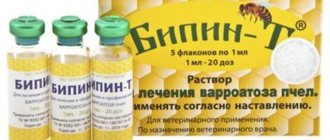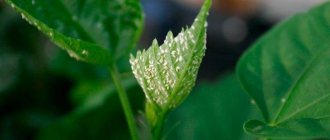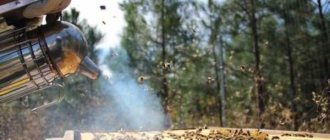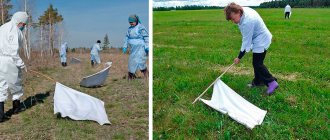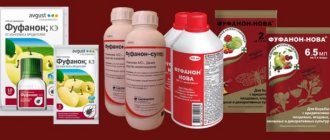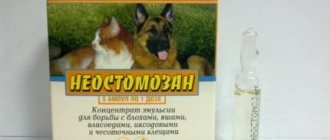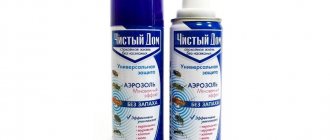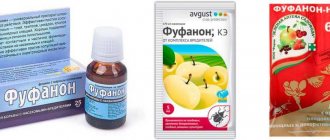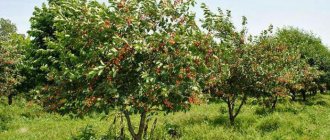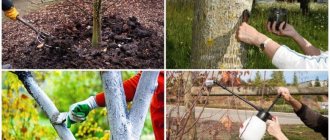Every beekeeper wants his pets to be as productive as possible, and for this they, first of all, must be healthy. In order to ensure that the bee family does not get sick, you need to properly care for it, treat it against diseases in a timely manner, and if cases of the disease are identified, then start treatment in a timely manner in order to prevent the worst - the death of the bees. The most common bee disease is varroatosis. It is insidious in that it is epidemiological in nature, and in the first stages it is very difficult to recognize, therefore, preventive treatment of bees with bipin will avoid mass infection and death of insects, protecting the bee colony from the spread of this unpleasant disease.
Release form
Sold in glass ampoules as an emulsion for dilution with water. The drug is available in different volumes (0.5 ml, 1 ml, 2 ml, 5 ml, 10 ml). The smallest jar is designed for 10 doses.
The color of the emulsion ranges from transparent to yellow. The smell is stinky, pungent. Produced in Russia by the Agrobioprom company in 2 types, the characteristic features of which are presented in the table.
| Name | Suitability | Color | Season of use | Peculiarities |
| “Beepin” | 3 years | Transparent | Autumn | – |
| Bipin-T | 2 years | Yellow | Autumn and spring | Contains the substance Thymol (improves the condition of bees after infection). |
How to spot ticks
The appearance of mites is indicated by uncharacteristic behavior (restlessness and aggressiveness) and weakness of insects, defects in the offspring, a decrease in the life expectancy of bees, a decrease in the volume of honey collection, and an increase in the amount of waste.
Brown spots similar to millet grains may appear on the body of insects. When mites multiply excessively, they completely paralyze the performance and vital processes of bees. If you do not get rid of parasites, then in a year they can turn a thriving apiary into a collection of barely moving bees, unable to even feed their offspring.
Indications and contraindications
The product “Bipin” is necessary for bees to protect against Varroa mites. Before the invention of special means, billions of bees around the world were destroyed by this terrible insect. Millimeter ticks wait for prey on flowers. The pest deftly jumps onto the bee, attaches itself to it and enters the hive. Varroa, by penetrating the hemolymph and replacing the circulatory system, transmits the dangerous “deformed wing” virus to the striped workers (and subsequently to the brood). As a result of infection, new bees are born with large defects - without wings or without legs, for example.
In one summer, the female parasite is capable of laying eggs more than 3 times. Mites can live with bees in the hive for about six months, including the winter period. It is not difficult to imagine the scale of destruction of bee colonies. In 30 days, the tick moves a distance of 11 km. and infects all nearby apiaries along the way.
The bottom line is that the beekeeper will not immediately notice harmful phenomena in his farm. Obvious symptoms of infection from ticks appear only a year after infection. Without early action, bees die. They cannot fly, which means they cannot eat. As a result of the actions of Varroa mites, bee larvae become unviable and rot.
In such a situation, preventive measures are a panacea for a tick-borne epidemic. These mites appeared in our country half a century ago. Soon, Soviet scientists invented an effective chemical for beekeeping called “Bipin”. Since then, Russian beekeepers have been successfully using it.
Advantages of the medicine:
- Performance. “Bipin” works immediately. After half an hour the ticks begin to die.
- Efficiency. Primary treatment allows you to destroy up to 99% of pests in 12 hours. The procedure can be carried out at temperatures from +5 to -5 degrees.
- Safety. Despite the fact that the product is moderately toxic, it affects the condition of bee colonies. Moreover, bee honey can be consumed after Bipin.
The medicine is contraindicated in weak bee colonies (less than 5 hives). Also, don't overdo it. Overdose is harmful. Cannot be used in its pure form.
Before the procedure, experienced beekeepers advise testing “Bipin” on 2-3 families to make sure whether it is possible to treat bees against mites during this period.
Benefits of autumn processing
Most experienced beekeepers recommend processing at this time, since the brood is much smaller. Over the summer, the mites parasitizing on bees grew, feeding on the vital juices of the “carriers”. And in order to prepare the swarm for wintering, insects should be rid of pests. Otherwise, few will survive the cold season.
Please note that the treatment is allowed in the spring, but the drug is not used in frosty weather.
Optimal timing, temperature
Let's consider when to treat bees with "Bipin" in the fall. The answer to this question will be given by the bees themselves. The beekeeper needs to observe the behavior of insects. They will begin to form clubs, preparing for the winter, and will stop flying out for a bribe - these are signals that it is time to start treatment.
The preferred temperature range is from +1°C to +5°C.
Instructions
So, you are a beekeeper who cares about the productivity of your apiary and the health of your bees. You know about the harmfulness of varroatosis, so you decided to take preventive measures with the help of “Bipin”. Below are detailed instructions for treating bees with the drug.
Application period
“Bipina” poison is used in the off-season, during the absence of brood. This is autumn (early September, before hibernation) and after the final honey harvest. With Bipin-T it is allowed to carry out spring treatment. During a particularly hot summer, when a tick attack is inevitable, it is permissible to spray the product without waiting for autumn.
Regardless of the season and type of poison, the procedure is carried out twice with an interval of a week.
Dosage
For 10 ml “Bipina” – 20 l. water. Accordingly, for 5 ml. products – 10 l. water, 2 ml. – 4 l., 1 ml. -2 l. and so on. 1 ml. – this is 20 doses. The calculation is as follows: 150 ml. – for a strong hive (10 ml per cell). After dilution, the medicine acquires a milky color.
Tools
Water – clean, potable, warm or at room temperature. Sprayers:
- automatic syringes;
- bottles with dispenser attachments;
- spray;
- syringe;
- homemade sprayers.
As a means of destruction, some beekeepers use a special smoke cannon (sold in beekeeping stores). That is, treatment with medicine occurs not by spraying, but by fumigation (1 ml of “Bipin” per 40 ml of water). You can treat with smoke at a time (2-3 circles), without a 7-day interval.
According to reviews, ticks die in the first 15 minutes. To see the results, white paper is laid on the floor of the hive, which, after fumigation, is completely covered with mites. The bees, twitching from the smoke, throw off the pests.
This device runs on kerosene. It is important to wear a mask on your face during treatment. Inhaling medicinal vapors is dangerous for humans. At a minimum, allergies or skin irritation may develop.
Procedure
Freshly prepared emulsion is stored for only a day. Therefore, it is advised to dilute the poison directly in the apiary:
- Open the hives;
- Remove the pillows;
- Without removing the frame, you spray the poison.
Try to distribute the liquid evenly so that each bee gets at least one drop.
What is varroatosis
Varroatosis is a severe contagious disease of all types of bees, from pupae and larvae to adults. It is transmitted by the Varroa Jacobsoni mite, a microscopic insect that looks like a crab, which feeds on the hemolymph (blood) of honey-bearing insects, causing them to weaken and subsequently die. This disease brings both small beekeeping farms and entire apiaries to their knees. And, unfortunately, the invasion of this scourge is spreading more and more every year.
Varroatosis is a quarantine disease, and the worst thing is that this disease cannot be detected in the initial stages, and the apiary worker, without knowing it, contributes to its rapid spread through his actions.
Parasitic insects can get into hives with the help of migratory thieving bees or when purchasing honey plants from infected apiaries, therefore, it is very important to carry out prevention and treatment in a timely manner to prevent mass infection of insects.
Precautionary measures
“Bipin” is harmless to bees, but dangerous to humans. During use, it is recommended to adhere to the following protective measures:
- carry out the treatment in special clothing (apron, gloves, robe);
- do not contact with infected insects for 24 hours after treatment;
- do not allow the emulsion to come into contact with the skin;
- During the procedure it is forbidden to eat, drink, or smoke.
The substance amitraz in hypersensitive people, if safety precautions are ignored, causes:
- headache, migraine;
- dermatitis;
- itching;
- asthma attacks.
After working with poison, hands should be thoroughly washed with soap.
Operating rules
Experts advise not to treat the entire apiary at once, but to test the effect of the drug on one family: treat two streets and observe the bees for 24 hours.
Precautionary measures
If you decide to get rid of a tick in the fall, you should remember that Bipin is a toxic drug. Therefore, work with it must be carried out in compliance with personal safety precautions.
Here are some tips for novice beekeepers:
- Be sure to wear a protective suit.
- Protect your face with a mask, your hands with gloves, your eyes with goggles.
- For processing, you should choose a calm day. If it doesn’t work, stand in the wind so that spray or smoke does not accidentally hit the beekeeper.
- After using the drug, be sure to wash your hands with soap.
- Send the clothes to the wash.
- If Bipin accidentally gets on the mucous membranes or skin, you must immediately wash it off with water.
If the solution remains after work, it cannot be used; it must be poured out in a place inaccessible to pets.
Storage
The drug should be kept in a dark, dry and cool place (temperature range – 0-+30°C). Shelf life – 36 months. An opened ampoule cannot be stored and must be disposed of.
Impact on honey quality
This aspect is of particular concern to beekeepers. Indeed, it would be a great shame if the use of a chemical negatively affects the product and ruins all the work.
Fortunately, studies have proven that Bipin does not affect the quality of honey in any way. In addition, processing is carried out in the fall, after commercial honey has been completely withdrawn.
Alternative drugs
Among the means of combating variotosis, the following types of drugs can be distinguished:
- Chemical emulsions – “Amitrazine”, “Apitak” (analogues of “Bipin”), “Bisanar” (thymol + oils), “Aqua-flo” (fluvalinate);
- Natural remedies – fir essential oil (wet the tompons and place them in frames), pine flour (sprinkle on insects), acids – oxalic, formic acid (“Ant”, “VarroNet”);
- Cardboard strips with acaricidal impregnation - “Akarasan”, “Amipol-T”, “Apides”, “Varrosan”, etc. (they burn and treat the hives with smoke);
- Gel (put a bag of medicine at the bottom of the hive) - “Apigel”.
All these medications are aimed at removing ticks. Natural remedies work effectively, but not immediately. Chemicals destroy quickly and cleanly. In addition, each beekeeper chooses a convenient method of application.
Why is it best to treat bees in the fall?
In the fall, the bees no longer raise replacements for themselves and they have no brood; moreover, the bees are preparing for winter and gather in a club when cold weather sets in. The beekeeper’s task of treating against mites is made easier:
- The bees sit in a group and it is easier to apply medicine to them.
- The bees behave quietly, usually do not fly off the frames, and you can work without a protective mask.
Important!
Autumn treatment of bees with Bipin is carried out only at positive temperatures, preferably at 1-5 degrees Celsius. At higher temperatures, the bee club breaks up and the drug is not distributed evenly from bee to bee.
Basic information
A bee affected by a mite
Treating bees against varroatosis is one of the most important processes for modern beekeeping. Its importance is difficult to overestimate, since the life of bee colonies in winter and their development throughout the season directly depends on it.
The Varroa mite, in addition to causing enormous harm to insects (sucking blood and hemolymph from all members of the bee colony), is also a carrier of various viruses and diseases, such as acute or viral paralysis.
The tick was formed on the territory of the Soviet Union about 50 years ago. It began to develop quite quickly and caused a lot of damage to beekeeping. However, after some time, beekeepers learned to cope with the emerging threat. Of course, it was not possible to completely eliminate the tick, and they had to constantly work to prevent the expansion of the disease. The disease caused by the varroa mite is called varroatosis, and mainly affects bees.
In what cases is treatment of bees with Bipin indicated?
Bipin is used for the treatment and prevention of varroatosis, a parasitic disease caused by the Varroa mite. Initially, this parasite affected insects in India and Southeast Asia, but in the 60s. XX century it has spread throughout the world and has become a parasite, including honey bees. At the moment, each apiary is considered by default to be infected with the Varroa mite, therefore, to prevent its spread, preventive measures should be carried out regularly.
The mite attaches itself to the bee and sucks out the hemolymph from it. Symptoms of varroatosis:
- wings are absent or curved, underdeveloped;
- in an advanced stage, bees without legs appear;
- individuals cannot perform their functions and die.
How to diagnose varroatosis? Signs of parasites:
- in adult worker bees, brown plaques 2 mm in size are visible on the abdomen and on the cephalothorax at the place where the wings are attached - these are female mites;
- dark brown spots are found on the white body of the brood pupae;
- dead or live parasites are present on removable trays along with hive litter.
To assess the mite infestation of a bee family, the following method is used. Several dozen live bees are placed in a box and doused with boiling water with a dissolved spoonful of soda. Dead mites fall off and their percentage relative to the number of bees is calculated. The permissible value of mites is less than 4%.
Processing nuances
It is quite difficult to treat varroatosis; it is best to pay special attention to prevention in order to prevent infection by mites. If parasites appear, then it is necessary to carry out treatment, taking into account some nuances:
- after opening the ampoule, the medicine quickly (within 24 hours) loses its properties;
- An undiluted solution cannot be used for processing;
- The drug should be dissolved in warm (30-40°C), but not hot, water;
- the product does not destroy parasites located in cells with brood;
- it is not necessary to disinfect hives during the period when the younger generation is growing up;
- It is not recommended to treat bee colonies weakened by disease or for other reasons that have not gained even 5 streets, which can provoke their death;
- in no case should you increase the dosage, which can lead to poisoning and death of the bees;
- It is recommended to treat bees against mites twice in the fall with bipin at weekly intervals.
Beginners are advised to first test the effect of the drug on several hives. To test its effectiveness, you can place a white paper sheet on the bottom of the hive. After 3 hours, dead ticks should appear on it.
It is necessary to check the expiration date of the drug. Its effectiveness lasts for three years. Expired medication will not only not provide the desired result, but can also cause the death of insects.
How to prepare the drug correctly?
It would be a big mistake to use the drug in the form in which it is already available, because it is very concentrated - and therefore very toxic in such a concentration. Therefore, it is first important to dilute it in warm water. Approximately for every two liters of water, take a milligram of medicine.
It is important to remember that the temperature of the water at which cooking will be carried out should not exceed 40 degrees. If everything is prepared as it should be, then you will get a solution that is homogeneous and has a color close to milky.
In order to use this drug correctly in the future, it is recommended to take a syringe and a measuring cup. It’s even easier to take a special needle with a tube, which is usually attached to the dropper, as well as a one and a half liter container. The tube is connected to the container, and then the bees are systematically treated using a syringe.
Signs of the disease
The Varroa mite infects the brood. In a bee colony where there are many parasites, upon examination you can see damaged bees (too small, with damaged wings or without them at all).
Recently, cases of autumn gatherings of bee colonies have become more frequent. According to statistics, the main reason for the autumn gathering in more than 90% of cases is precisely this tick and the viral diseases that are its consequence. Therefore, it is better to carry out prevention several times a year. When the bees begin their autumn migration, it will be too late, since the mite first covers the seeding, and the individuals going to winter will be sharply weakened and already infected with the disease. More information about the signs of the disease can be seen in this video:
Preventive effect
Bipin t can be used not only for medicinal purposes, but also as a prophylactic agent. It often happens that drones bring some kind of disease into the hive, from which it is then not so easy to cure the insects. Experts are absolutely sure that this drug is one of the best in its industry, it is absolutely harmless to insects and easy to use, at the same time its treatment is very productive. It’s not at all difficult to treat bees with it, all you need to do is dilute the drug and irrigate the entire bee colony, as shown in this video:
